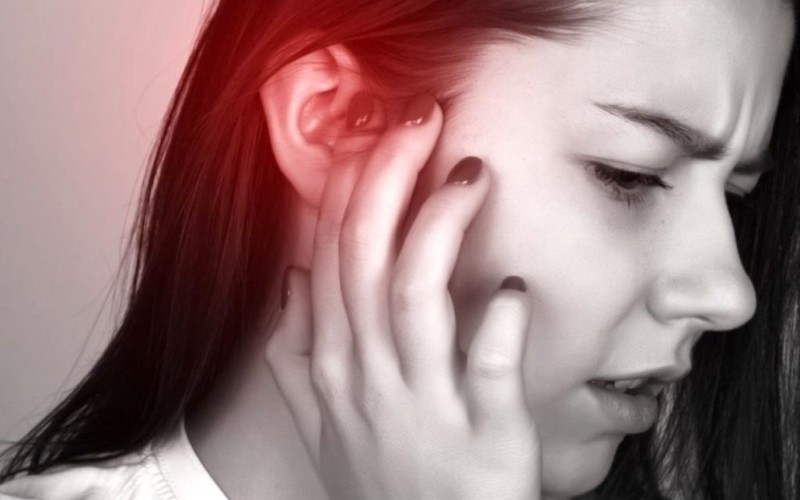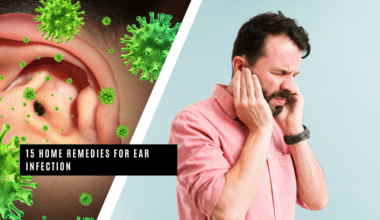Is that water in your ear, or are you having symptoms of an ear infection? Knowing the difference between “acceptable” ear discomfort and a true infection can save you a lot of pain in the long run.
Ear infections can be due to both viruses and bacteria and most often occur during the winter months. These bacteria are located in the ear canal in front of the esophagus and can cause eczema and inflammation. In this article, we will guide you in detail about the symptoms and treatment of an ear infection.
Table of Contents
Understanding the Structure of the Ear
The symptoms of an ear infection can vary widely, depending on where the infection is located. So, it is important to understand how the structure of the ear can encourage an ear infection. If you remember, your ear has three parts. Let’s go back to high school and review the ear:
- Outer ear: The outer ear begins at your ear itself (called the pinna) and the external ear canal. The external ear canal ends at the tympanic membrane or eardrum. Symptoms of an infection of the outer ear may involve red, swollen, and tender tissues.
- Middle ear: This contains the eardrum and an air-filled space, referred to as the tympanic cavity, and the Eustachian tubes. Symptoms of ear infection of the middle ear may cause fever, a feeling of something in the ear, and drainage.
- Inner ear: This contains the cochlea and the balance receptors in areas known as the vestibule and the semicircular canals. Symptoms of ear infection of the inner ear may include dizziness and nausea.
How do ear infections develop?
Ear infections often occur after a cold or inflammation of the throat where viruses or bacteria from the nose or throat have developed in the middle ear. There are several ear problems that cause discomfort and can mimic the symptoms of an ear infection. These are:
1. Ear wax build-up
While it is normal for the outer ear canal to be covered in a thick, waxy substance, sometimes too much ear wax can build up and cause problems.
The first sign that you have an ear wax buildup may be decreased hearing in the affected ear. There are over the counter drops that can loosen and thin the wax, and complete kits that include a bulb syringe that will allow you to gently rinse the ear canal with warm water. Doctors can perform this procedure in the office, if necessary.
2. Otitis media
This is a form of the ailment that is caused by an infectious process, usually viral.
3. Otitis media with effusion
Affecting the middle ear, this is a fluid build-up that occurs after an infection has cleared up. If it happens frequently, it is called chronic otitis media with effusion. It is common in young children.
4. Glue Ear
A form of long-term otitis media, this problem occurs when a thick fluid builds up behind the eardrum, most frequently in children. It can result in a hearing loss.
5. Swimmer’s ear
Swimmer’s ear is a perfect storm of humidity, moisture, and heat that can cause the lining of the ear canal to swell. It is worsened when added water from a shower, bath or swimming is added to the mix. Because the lining has been softened, it now becomes very susceptible to infection.
6. Tinnitus
This is a term that refers to any noise, like a buzzing or ringing, that occurs in your ear that no one else can hear. It can be caused by medications, loud noises, or even earwax buildup.
7. Vertigo
This is a disruption of the balance centers in your ear. Dizziness and wooziness characterize this disorder. Vertigo may clear up on its own, but your doctor can give you medications to help.
Ear Infections Symptoms
There are many symptoms of an ear infection, and they are the same in children and adults. Smaller children are more susceptible to ear infections, and while they may not be able to verbalize their discomfort, the symptoms of an ear infection are hard to miss in these young patients. Some common symptoms of an ear infection:
- Earache: can be dull or stabbing
- Drainage: the affected ear may have drainage of some sort
- Dizziness
- Nausea
- Fever
- Muffled hearing
- The feeling that there is “something” in the ear.
- Tugging at the ear
- Fever
- Restlessness, irritability
- Sleep disturbances
- Poor appetite
Why are Children more likely to Suffer an Ear Infection?
Young children are more prone to developing ear infections because their immune systems are not fully developed. Additionally, kids have short Eustachian tubes, making them less likely to drain fluid efficiently and far more likely to cause a fluid back up.
Kids also have larger adenoids in relation to the size of an adult’s, and they are more likely to become infected and swell, blocking the Eustachian tubes.
Allergies and family histories of ear infections can increase the odds of a child developing chronic infections.
Ear Infection Treatment
Some ear infections can clear up on their own, while the symptoms of an ear infection can drive people to the doctor for relief. The doctor has several options for treatment, like:
-
Pain relief
Ibuprofen and Tylenol are frequently recommended to relieve the pain of an ear infection. The heat has been shown to provide soothing relief, too.
-
Antibiotics
If the infection is bacterial, the doctor may prescribe antibiotics. It’s important to understand that some ear infections are viral, and antibiotics will not help a viral infection.
-
Draining the fluid
If the infection isn’t clearing up, the doctor may opt to drain the ear.
-
Gargling
It is possible that gargling with warm salt water may encourage the ear to drain on its own.
-
Steroids or antihistamines
Your doctor may opt to give you a steroidal treatment or place you on antihistamines.
-
Ear tubes for pediatrics
Because some children are constantly experiencing ear infections, a doctor may suggest that he or she get tubes placed in the ear.
Preventing Ear Infections
While it may not be possible to stop all ear infections, you can lower your risk of developing one by following a few simple tips:
- Dry your ears after showering or swimming
- Use caution when swabbing the ear. Vigorous deep swabbing can push wax deeper into the ear canal.
- Use allergy medications if needed
- Wash hands frequently
- To avoid ear infections in babies, give them bottles standing up. Don’t let babies sleep with pacifiers or bottles
- Avoid smoking or being around second-hand smoke.
Ear infections can be annoying, and very painful. If your infection is not clearing up on its own after a day or two, make an appointment with your doctor to evaluate your condition and treat the symptoms of an ear infection.





